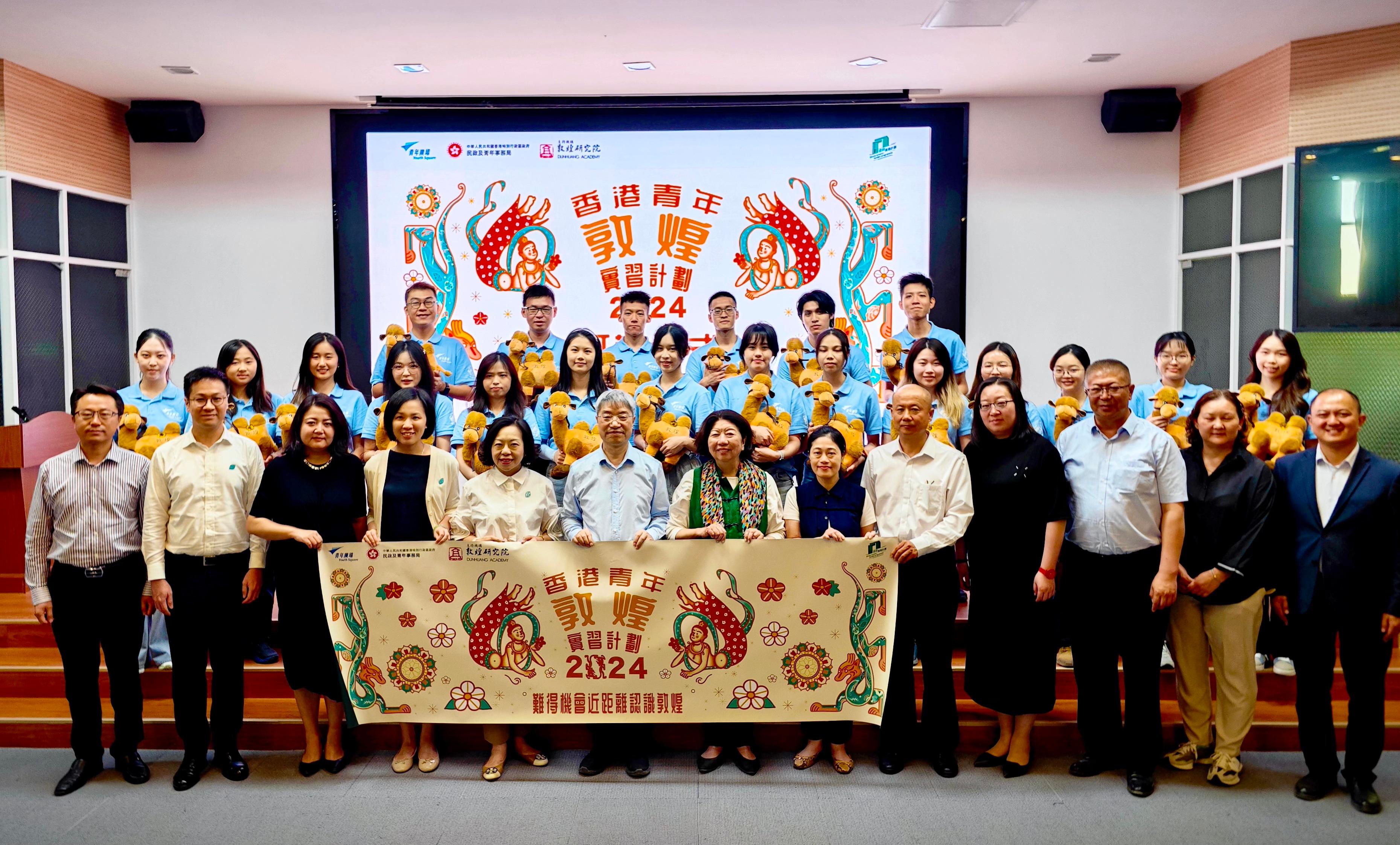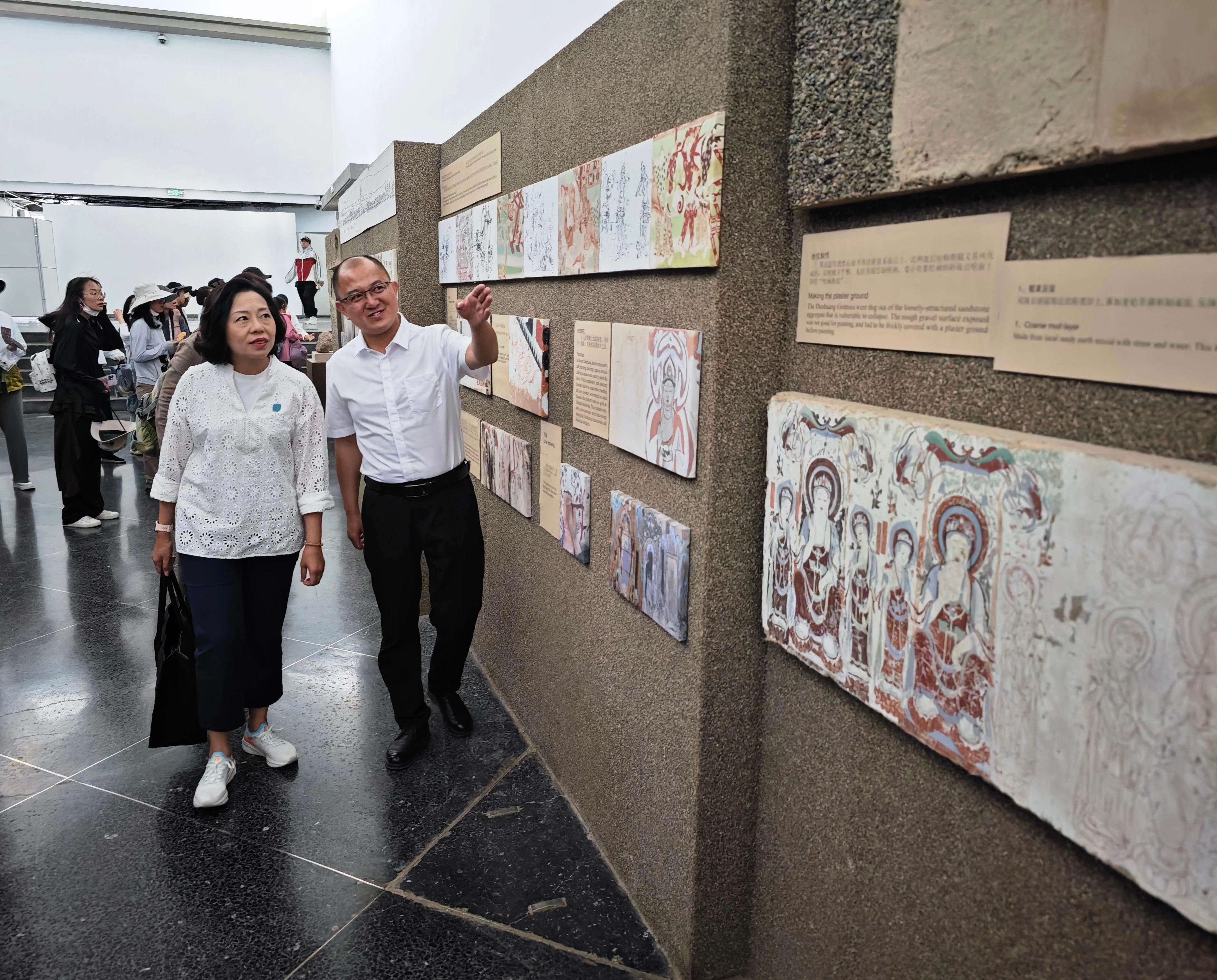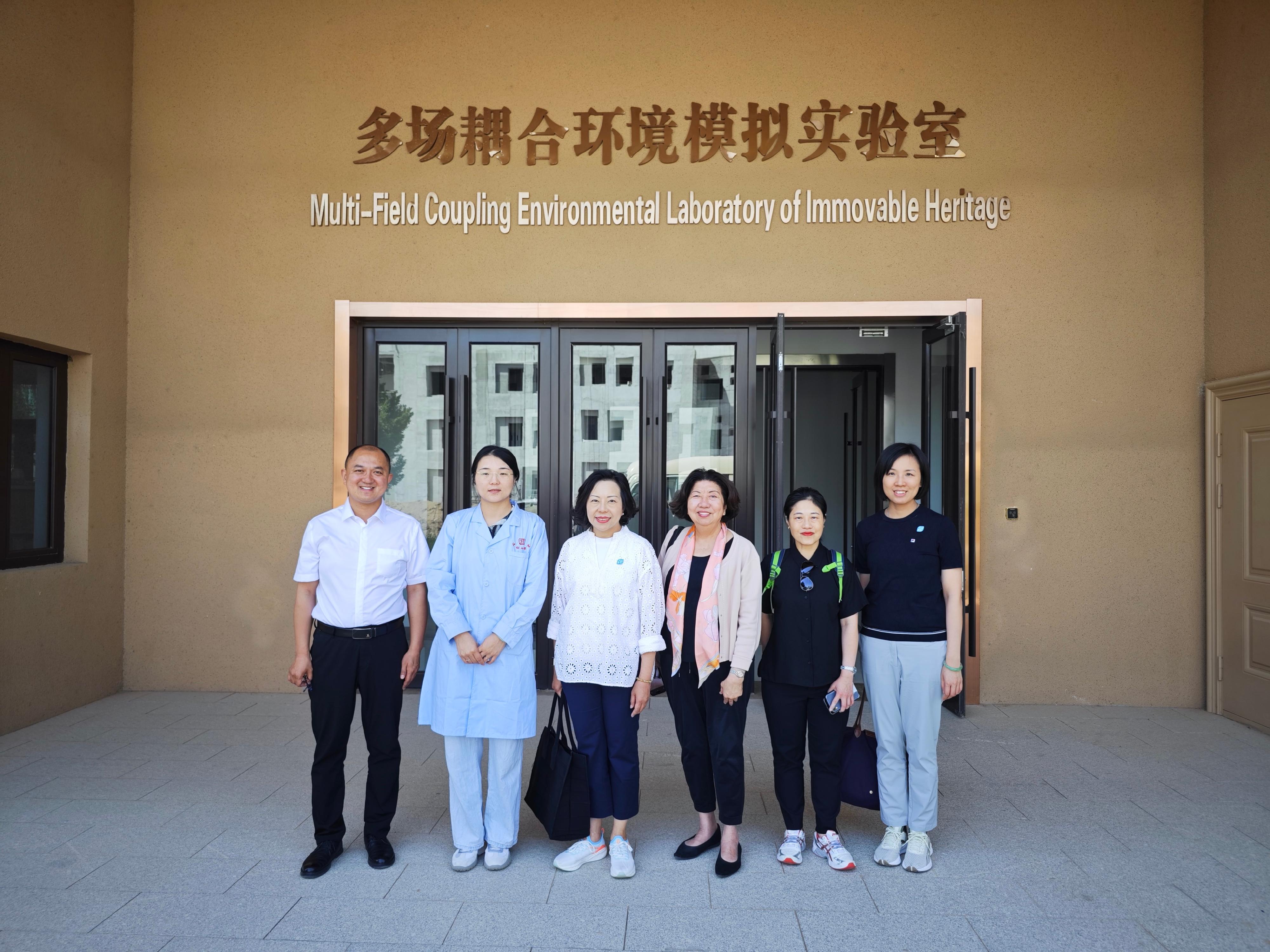Following is a question by Dr the Hon Ngan Man-yu and a written reply by the Secretary for Health, Professor Lo Chung-mau, in the Legislative Council today (June 5):
Question:
According to the report entitled "Projections of Population Distribution 2021-2029" released by the Planning Department, by 2029, the population aged 65 or above will be 191 800 in the Kwun Tong district, which will be the district with the highest number of persons aged 65 or above in Hong Kong. On the other hand, at present, in the Kowloon East Cluster of the Hospital Authority (HA) there are four general outpatient clinics (GOPC) and one community health centre in the Kwun Tong district. Regarding the public primary healthcare services in the Kwun Tong district, will the Government inform this Council:
(1) of the details of the planning for GOPC services in the Kwun Tong district in the next 10 years (including the number of clinics, the situation of the proposed development or redevelopment of clinics, the consultation quota, as well as the work to care for episodic disease patients and chronic disease patients);
(2) whether it knows when the expansion project of the United Christian Hospital (UCH) will be completed, and whether HA has reviewed afresh if UCH will be able to meet the increasing service demand after its expansion; if HA has reviewed and the outcome is in the negative, whether it has plans to further expand the hospital;
(3) of the following figures (with a breakdown by the 18 districts across the territory) since the launch of the Chronic Disease Co-Care Pilot Scheme (CDCC Pilot Scheme) in November last year: (i) the respective numbers of doctors and members of the public who have participated in the scheme, and (ii) among such members of the public, the respective numbers of those who have completed pre-screening consultations and screening, and among them, the respective numbers of those who have been diagnosed with chronic diseases such as prediabetes, diabetes mellitus and hypertension and need follow-up care or treatment;
(4) whether it will introduce enhancement measures for the CDCC Pilot Scheme, including encouraging more doctors and members of the public to participate in the scheme; and
(5) given that at present, only the interim "District Health Centre (DHC) Express" has been set up in the Kwun Tong district to provide health promotion, consultation and chronic disease care for residents in the district, of the Government's timetable and details of its plan to set up a DHC in the district (including the services to be provided)?
Reply:
President,
In face of the rapidly ageing population, rising prevalence of chronic diseases and increasing healthcare services demand, the public healthcare system, as the cornerstone and safety net of the Hong Kong's healthcare system, has to concentrate resources and accord priority to accident and emergency (A&E) and specialist services, as well as secondary and tertiary healthcare which require complicated technologies. The Government has put forward a proposal for reform in the Primary Healthcare Blueprint, focusing on strengthening primary healthcare services and alleviating the pressure of the public healthcare system, especially the Specialist Out-patient Clinics under public hospitals. The Government will continue to advocate the concept of "Family Doctor for All". Through the Chronic Disease Co-Care Pilot Scheme (CDCC Pilot Scheme), the Government will establish a family doctor system and conduct screening such that people with more economic capability can be diverted to the private healthcare sector for health management through a co-payment model. At the same time, the Government also has to consider concentrating the limited resources of public General Out-patient Clinics (GOPCs) by giving priority to provide primary healthcare services to those who may not be able to afford private healthcare services. The Government will gradually reposition the GOPCs to focus on taking care of low-income persons and the socially disadvantaged groups.
In consultation with the Hospital Authority (HA), the reply to the question raised by Dr the Hon Ngan Man-yu is as follows:
(1) The GOPCs of the HA are mainly positioned to serve low-income persons and socially disadvantaged groups in priority, as well as chronic disease patients with stable conditions and patients with relatively mild episodic illnesses. At present, in the Kowloon East Cluster (KEC) of the HA, there are five GOPCs in the Kwun Tong district, namely Kwun Tong Community Health Centre, Ngau Tau Kok Jockey Club GOPC, Lam Tin Polyclinic GOPC, Kowloon Bay Health Centre GOPC, and Shun Lee GOPC. The five GOPCs provided a total of over 550 000 consultation quotas in 2023-24 and accounted for about 10 per cent of the city-wide GOPC quota. The GOPCs of the Kwun Tong district reserve about 50 per cent of the consultation quota for chronic disease patients and those with episodic illnesses respectively to take care of the needs of different patients. Service utilisation of the clinics in Kwun Tong district is set out in Annex I.
The HA has implemented a series of measures to augment the service capacity of the existing clinics in the Kwun Tong district. These measures include actively recruiting additional staff, carrying out clinic renovation and facility renewal so as to streamline patient flow, improving clinic environment for patients and providing additional consultation rooms. The HA completed improvement works and refurbishment of facilities for the Kowloon Bay Health Centre GOPC and the Ngau Tau Kok Jockey Club GOPC in January 2018 and August 2023 respectively to allow for further enhancement of the service capacity of GOPCs in the district where manpower permits.
The Government will set up a GOPC at Ko Chiu Road in Yau Tong to cope with the healthcare service demand in Kowloon East in the long run. Funding approval from the Legislative Council (LegCo) has been obtained in March 2023 for the relevant project and the construction work is expected to be completed in 2028. The Government has also reserved a site for the development of a community health centre building at On Sau Road in Kwun Tong as part of the Hospital Development Plan (HDP). The Government has consulted the Kwun Tong District Council on the project and will seek support from the LegCo in due course. The services provided by the planned clinics include medical consultations, multi-disciplinary medical care, chronic disease management, as well as patient education and support services. Upon completion of the two projects, it is preliminarily estimated that 300 000 consultation quotas can be provided where manpower permits.
Furthermore, to strengthen the support to chronic disease patients, the Government has rolled out a series of measures to enhance chronic diseases management in the GOPCs through HA. These include the provision of health risk assessments and specific care for patients with chronic diseases, such as diabetes mellitus (DM) or hypertension (HT), by multi-disciplinary teams so as to reduce the risk of complications among these patients and the number of their attendances at clinics so that more quota can be made available for patients with episodic illnesses.
The Government understands there is a strong demand for GOPC services in the community. The Government will continue to closely monitor the demand for public primary healthcare services in Kwun Tong district to plan and develop facilities and services accordingly, so as to provide the primary target users with appropriate primary healthcare services.
(2) Regarding the expansion of United Christian Hospital (UCH) project under the First HDP, its superstructure and associated works commenced in September 2020. The relevant works will be completed in phases from 2025 onwards and the related healthcare services will correspondingly be commenced in a progressive manner. Upon completion of the expansion project, there will be adequate space and upgraded facilities for supporting A&E and specialist out-patient services to meet the increasing service demand and help shorten patients' waiting time. Other ambulatory care services will also be enhanced to provide comprehensive integrated healthcare services for the community. It is anticipated that UCH will provide about 2 100 in-patient and day beds (i.e. 560 additional beds including eight haemodialysis day beds) upon completion of the expansion project. The new Oncology Centre will provide radiotherapy, chemotherapy and psycho-social care for cancer patients in the KEC. In addition, the expansion project will enhance convalescent and rehabilitation services in the KEC. The HA also plans to add five operating theatres after completion of the expansion project. The existing diagnostic and treatment facilities, including operating rooms, the coronary care unit, intensive care unit, radiology department, A&E department and endoscopy centre, will also be improved or expanded.
Furthermore, the construction of the New Acute Hospital (NAH) in the Kai Tak Development Area under the First HDP will also provide 2 400 in-patient beds as well as other healthcare and support facilities. When planning for the NAH, the HA has already taken into consideration the projected service demand of the Kowloon Central Cluster as well as the neighbouring Kwun Tong district in the KEC.
The HA plans and develops various public healthcare services on a cluster basis, taking into account a number of factors, including the increase in service demand due to population growth and demographic changes, healthcare needs brought about by the rising prevalence of chronic diseases, and factors such as technological development, manpower supply and delivery models of relevant services, and formulates plans in line with service arrangements of various clusters. In view of the latest developments of the Northern Metropolis, the Health Bureau and the HA are proactively reviewing the Second HDP, including adding additional number of beds and facilities in the KEC, to cope with the projected service demand. The HA will continue to review the utilisation and demand of various healthcare services in the KEC with a view to providing the most appropriate healthcare service model and facilities.
(3) and (4) The Government has launched the three-year CDCC Pilot Scheme since November 13, 2023 to provide subsidised DM and HT screening and treatment services in the private healthcare sector to Hong Kong residents aged 45 or above with no known medical history of DM or HT. The CDCC Pilot Scheme has received a positive response. As at May 22, 2024 (provisional figures), around 39 200 members of the public have participated in the Scheme, of which about 22 500 participants have completed the screenings for DM and HT, and nearly 8 900 of them (i.e. nearly 40 per cent) have been diagnosed with prediabetes (note), DM or HT; the latter patients can proceed to the treatment phase and will be subsidised by the Government to continue their treatment with self-selected family doctors, and subject to their health conditions, be offered prescribed medication, follow-up care at nurse clinics and allied health services. As at April 30, 2024 (provisional figures), among the participants, about 60 per cent are female, approximately 40 per cent are male, and around 70 per cent are aged between 45 and 64. The scheme participant enrolment details are set out in Annex II.
As at May 22, 2024, over 500 family doctors enrolled in the CDCC Pilot Scheme. The district distribution of family doctors' service point and the range of co-payment set by the family doctors are set out in Annex III. Family doctors will receive a set of stickers with characters of "Family Doctor" and the official logo of the CDCC Pilot Scheme after enrolment. Family doctors need to display the stickers in visible areas within the practising location where they can be easily identified by patients and visitors at all times during the period of participation in the CDCC Pilot Scheme.
Since the launch of the CDCC Pilot Scheme, the Government has promoted the CDCC Pilot Scheme through various channels. District Health Centres (DHCs) play an important role in the promotion of CDCC Pilot Scheme. In addition to inviting existing eligible members to participate in the CDCC Pilot Scheme, DHCs also organise large-scale promotional activities in respective districts and strengthen connection with the public through community outreach activities, mobile outreach vehicles and promotional booths in community complexes. At the same time, DHCs have been actively co-operating with community service partners and participating in local services, such as co-operating with District Services and Community Care Teams to organise activities to further recruit eligible individuals to become scheme participants. The Government has also been carrying out other forms of publicity activities in various media channels and providing the public and healthcare service providers with regular updates on the latest information of the CDCC Pilot Scheme through various communication platforms (such as website, hotline, posters and brochures, electronic newsletters and online briefings).
To further enhance doctors' understanding on the CDCC Pilot Scheme, five webinars were organised by the Government to promote and introduce the CDCC Pilot Scheme to the doctors. Besides, outbound calls were made by the Scheme's call centre to private doctors/clinics to encourage their participation in the Scheme. Moreover, CDCC Pilot Scheme information was shared to GOPC Public-Private Partnership Programme (GOPC PPP) doctors via the GOPC PPP e-Bulletin to encourage their participation in the Scheme. The Primary Healthcare Office and the Hong Kong College of Family Physicians co-organised the World Family Doctor Day Symposium 2024 on May 18, 2024 to share and discuss with healthcare professionals the promotion of primary healthcare services in a concerted manner. The symposium also highlighted the enhancements introduced by the Government to support family doctors in providing necessary healthcare services to CDCC Pilot Scheme participants, and encouraged more doctors to join the Scheme.
The CDCC Pilot Scheme is a brand new pilot scheme. The Government conducted a preliminary review within three months of its launch and collected opinions from service providers and participants from various channels, including conducting meetings to collect opinions from participating doctors and institutions. In general, comments covered the reflection of issues including enrolment arrangements for family doctors and scheme participants, family doctor pairing, co-payments, drug lists, information technology (IT) systems, and services provided by DHCs. Based on the results of the preliminary review, the Government will implement a number of improvement measures in phases, some of which have already been implemented (e.g. enhance IT system to improve operational arrangements; extend registration arrangement at clinics and add outreach pilot laboratory service points for screening phase to enhance convenience for participants; expand drug list of the Scheme; provide clearer guidance to family doctors and enhance scheme flexibility at the same time; and establish a multi-purpose platform for the administrative work to be handled in the Scheme).
(5) The Government will set up the Kwun Tong DHC in the Kwun Tong Composite Development Project which has secured funding from the LegCo in October 2021 and is expected to be completed by the end of 2026. The Government has set up an interim DHC Express at the UCH in Kwun Tong prior to the completion and opening of the Kwun Tong DHC. Services of the Kwun Tong DHC Express will migrate as appropriate to the Kwun Tong DHC upon commissioning.
DHCs provide district-based primary healthcare services to the community, which include preventive care, health promotion, health risk factor assessment, disease screening, chronic disease management, community rehabilitation. Meanwhile, DHCs play their role of a community engagement and resource centre, as co-ordinators of community primary healthcare services, case managers to support doctors providing primary healthcare services, and also district primary healthcare service hubs connecting public and private healthcare professionals with different sectors in society. With their core centres complemented by satellite centres at different locations in the district and outreach services, DHCs will build a network of healthcare service providers to provide accessible services for the community.
Note: Prediabetes with glycated haemoglobin level of 6.0 to 6.4 per cent or fasting plasma glucose level of 6.1 to 6.9 mmol/L.



